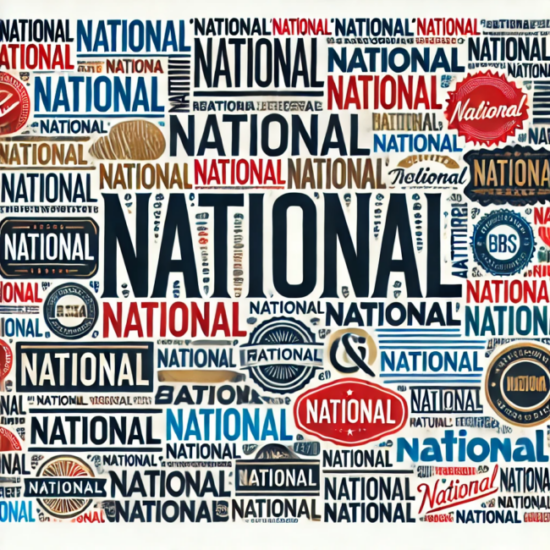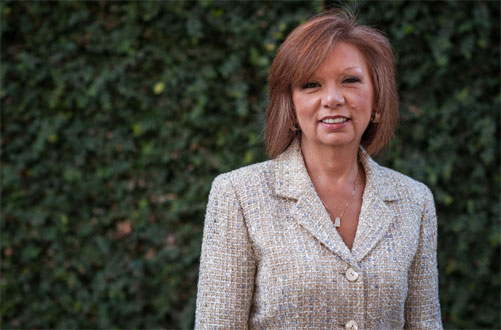
Trademark strength refers to the level of distinctiveness of a sign, which can be illustrated on a spectrum from strong to weak. Fanciful marks are the strongest, while generic marks are the weakest. Descriptive marks can acquire secondary meaning or distinctiveness over time, making them registrable as trademarks. Another key consideration in determining the strength of a mark is whether there are other similar marks used by third parties. A trademark may be weak due to the existence of many co-existing third-party trademarks that are the same or similar. This phenomenon is referred to as a "crowded field," which presents unique challenges for applicants and examining attorneys alike when assessing the strength and protectability of a particular mark. In such environments, suggestive marks, descriptive marks, and even arbitrary or fanciful marks can be weakened. This impacts the enforceability of the mark.
A crowded field arises when numerous similar or identical trademarks coexist in the marketplace, diminishing the distinctiveness of any one particular mark. In such scenarios, even otherwise strong trademarks may be considered weak due to their inability to stand out from the similar marks. As a result, trademarks in crowded fields often face challenges in securing trademark protection and may receive objections from the trademark office based on a likelihood of confusion refusal.
When an examining attorney evaluates a trademark application in a crowded field, they assess the likelihood that consumers may confuse the applied-for mark with existing marks. The more crowded the field, the greater the potential for similar marks to coexist without confusing consumers, as they have become accustomed to distinguishing between similar marks based on other factors, such as trade channels or commercial impression.
Trademarks are generally categorized on a spectrum of distinctiveness, ranging from generic to fanciful. Marks that fall on the weaker end of this spectrum, such as descriptive marks or generic trademarks, often face greater hurdles in crowded fields. Generic marks, for instance, cannot obtain trademark protection at all because they merely describe the common name for goods or services. Descriptive trademarks, on the other hand, may gain protection only if they acquire secondary meaning, where consumers begin to associate the descriptive term with a specific source. It is particularly difficult for a descriptive mark to gain secondary meaning in a crowded field because the mark is similar to many other marks for related goods or services.
Conversely, suggestive marks—those that require consumers to use imagination or reasoning to connect the mark with the goods or services—are inherently stronger. A suggestive mark hints at, rather than directly describes, a characteristic or quality of the product. Despite being stronger than descriptive marks, suggestive trademarks can still be weakened when many similar marks coexist in the marketplace. However, suggestive marks can become registered mark since the applicant can argue that the mark is registerable because there is no likelihood of confusion between the numerous similar marks that co-exist in the marketplace. This is generally referred to as a "crowded field" argument in trademark law.
In some cases, even arbitrary marks or fanciful marks, which are considered strong trademarks, may lose distinctiveness in a crowded field. However, a strong trademark may be weakened by the existence of a crowded field. A crowded field is less likely for fanciful trademarks. However, even in the event of a crowded field for a fanciful mark, the mark can likely be registered based on a crowded field argument.
Trademark applicants sometimes face a crowded field issue in the registration process. In such cases, the applicant's mark may face an office action issued by the US Patent and Trademark Office that includes a refusal based on likelihood of confusion with one or more marks in the crowded field. A likelihood of confusion refusal occurs when the examining attorney believes that consumers may mistakenly believe that the goods or services originate from the same source as those of a registered mark.
The applicant can submit an office action response arguing that the crowded nature of the field weakens the distinctiveness of the cited registered mark, and thus the applicant's trademark is not confusingly similar. When there are numerous similar marks already registered, the argument follows that consumers are more discerning and capable of distinguishing between similar marks in the marketplace. The federal courts and the Trademark Trial and Appeal Board (TTAB) have acknowledged that marks in a crowded field are less likely to cause confusion because consumers have come to expect subtle differences among competing marks in the same industry.
Providing evidence of third-party use of similar marks in the same trade channels can support the argument that a particular mark is unlikely to cause confusion. By demonstrating that similar marks have coexisted peacefully in the market, applicants can make a compelling case that their applied-for mark should be allowed to advance to trademark registration despite the crowded field.
Another important consideration when evaluating trademark weakness in a crowded field is the commercial impression conveyed by the trademark. The overall impression created by a mark in the minds of consumers can help distinguish it from similar marks, even in a crowded field. Marks that share common elements, such as a word or phrase, may still convey different meanings or impressions when viewed in their entirety. This distinction can help mitigate the likelihood of confusion between two marks.
For example, two marks that include the word "squeeze" for juice-related services may coexist without confusion if one is styled in a distinctive manner, includes additional design elements, or conveys a different commercial impression overall. See In re Boston Juicery, LLC. In this case, the distinctiveness of the commercial impression outweighs the similarity of the word marks.
Similarly, the trade channels through which the goods or services are marketed can also play a role in determining the likelihood of confusion. If two marks are used in entirely different trade channels, such as one being sold online and the other exclusively in brick-and-mortar stores, the likelihood of confusion is diminished. An experienced trademark attorney can help applicants analyze the trade channels of the applied-for mark and the cited mark to strengthen their arguments against a confusion refusal.

Once an applicant receives an office action for a likelihood of confusion refusal, it is crucial to analyze the cited mark and the goods and services identified. A well-researched and articulated office action response can include arguments related to the crowded field, commercial impression, and trade channels, as well as evidence of third-party use of similar marks. In some cases, it may be necessary to file an appeal with the TTAB if the examining attorney maintains the refusal in a final office action.
The TTAB applies the du Pont factors to assess the likelihood of confusion, with the similarities between the marks and the relatedness of the goods or services being the most critical factors. However, other du Pont factors, such as the number and nature of similar marks in use, the conditions under which consumers make purchasing decisions, and the overall commercial impression, can also be pivotal in appeals. A strong argument can sway the TTAB in favor of the applicant, especially if the cited mark is shown to be weak due to the crowded field.
To establish a crowded field in the trademark application process, begin by conducting a comprehensive clearance search of the USPTO and third-party databases to identify existing similar or identical marks. This search should focus on marks that share common elements with the applied-for mark, especially those within the same industry or related trade channels. After gathering this information, compile evidence of multiple co-existing marks to demonstrate that consumers are accustomed to distinguishing between similar trademarks in the marketplace. To further strengthen your case, submit examples of third-party registrations and emphasize how these marks have peacefully coexisted without causing confusion.
Additionally, it is important to provide evidence of no actual consumer confusion. This may include declarations from individuals or companies showing years of concurrent use of similar marks without any reported confusion. By highlighting these facts in your office action response, you can argue that the coexistence of your mark will not create confusion, supporting the registration of your trademark in a crowded field.
In trademark infringement litigation, evidence of a crowded field is used to argue that the asserted trademark is weak, making it less likely to cause consumer confusion. By demonstrating that many similar marks coexist in the marketplace, the defendant can assert that consumers are accustomed to distinguishing between them. This weakens the plaintiff’s claim of exclusivity over the mark. Courts may consider third-party registrations, examples of concurrent use without confusion, and the descriptive or suggestive nature of the mark to determine that the mark's scope of protection should be limited in a crowded field.
Trademark law includes many esoteric issues like the crowded fields. It is highly recommended that you seek the assistance of an experienced trademark attorney, who can analyze the commercial impression, trade channels, and existing third-party marks to improve a trademark applicant's chances of success in securing trademark protection.
For more information, contact our office for a free consultation with a trademark attorney who can guide you through the trademark process.
© 2024 Sierra IP Law. The information provided herein is not intended to be legal advice, but merely conveys general information that may be beneficial to the legal professional community, and should not be viewed as a substitute for legal consultation in a particular case.

"Mark and William are stellar in the capabilities, work ethic, character, knowledge, responsiveness, and quality of work. Hubby and I are incredibly grateful for them as they've done a phenomenal job working tirelessly over a time span of at least five years on a series of patents for hubby. Grateful that Fresno has such amazing patent attorneys! They're second to none and they never disappoint. Thank you, Mark, William, and your entire team!!"
Linda Guzman

Sierra IP Law, PC - Patents, Trademarks & Copyrights
FRESNO
7030 N. Fruit Ave.
Suite 110
Fresno, CA 93711
(559) 436-3800 | phone
BAKERSFIELD
1925 G. Street
Bakersfield, CA 93301
(661) 200-7724 | phone
SAN LUIS OBISPO
956 Walnut Street, 2nd Floor
San Luis Obispo, CA 93401
(805) 275-0943 | phone
SACRAMENTO
180 Promenade Circle, Suite 300
Sacramento, CA 95834
(916) 209-8525 | phone
MODESTO
1300 10th St., Suite F.
Modesto, CA 95345
(209) 286-0069 | phone
SANTA BARBARA
414 Olive Street
Santa Barbara, CA 93101
(805) 275-0943 | phone
SAN MATEO
1650 Borel Place, Suite 216
San Mateo, CA, CA 94402
(650) 398-1644. | phone
STOCKTON
110 N. San Joaquin St., 2nd Floor
Stockton, CA 95202
(209) 286-0069 | phone
PORTLAND
425 NW 10th Ave., Suite 200
Portland, OR 97209
(503) 343-9983 | phone
TACOMA
1201 Pacific Avenue, Suite 600
Tacoma, WA 98402
(253) 345-1545 | phone
KENNEWICK
1030 N Center Pkwy Suite N196
Kennewick, WA 99336
(509) 255-3442 | phone
2023 Sierra IP Law, PC - Patents, Trademarks & Copyrights - All Rights Reserved - Sitemap Privacy Lawyer Fresno, CA - Trademark Lawyer Modesto CA - Patent Lawyer Bakersfield, CA - Trademark Lawyer Bakersfield, CA - Patent Lawyer San Luis Obispo, CA - Trademark Lawyer San Luis Obispo, CA - Trademark Infringement Lawyer Tacoma WA - Internet Lawyer Bakersfield, CA - Trademark Lawyer Sacramento, CA - Patent Lawyer Sacramento, CA - Trademark Infringement Lawyer Sacrament CA - Patent Lawyer Tacoma WA - Intellectual Property Lawyer Tacoma WA - Trademark lawyer Tacoma WA - Portland Patent Attorney - Santa Barbara Patent Attorney - Santa Barbara Trademark Attorney